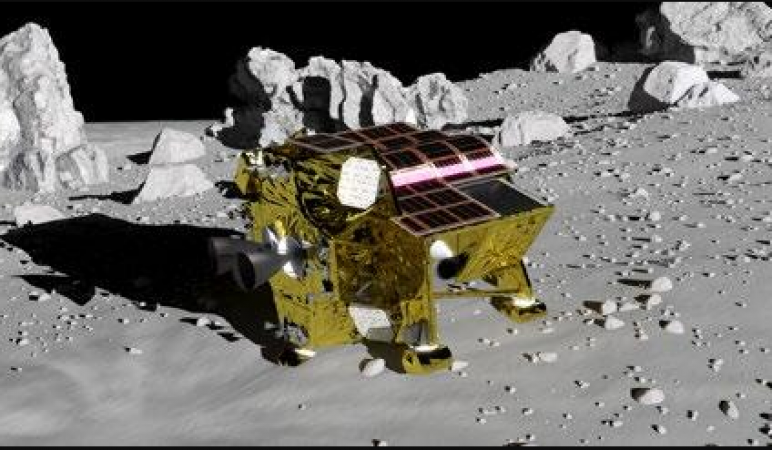
Tokyo: Japan's eagerly anticipated Smart Lander for Investigating the Moon (SLIM) is slated for launch on September 7, 2023, from the Tanegashima Space Center in southern Japan. SLIM, a compact and lightweight spacecraft, is primed to embark on a mission that encompasses lunar touchdown and a diverse array of scientific experiments.
The primary mission objectives of SLIM are as follows:
Demonstrate Lunar Landing Capability: A fundamental objective is to showcase the capacity to successfully land a small, lightweight spacecraft on the Moon's surface. This feat is crucial for paving the way for future lunar missions, both robotic and crewed.
Test Innovative Lunar Technologies: SLIM serves as a testbed for trialing novel technologies that could play pivotal roles in forthcoming lunar explorations. These technological advancements have the potential to enhance the efficiency and effectiveness of lunar missions.
Conduct Lunar Surface and Environment Experiments: The lander's mission extends to conducting experiments designed to investigate the Moon's surface and its surrounding environment. These experiments are geared toward enhancing our understanding of lunar geology, magnetic fields, and soil composition.
SLIM is approximately the size of a standard refrigerator, with a weight of about 590 kilograms. It boasts an array of scientific instruments, including a camera for capturing lunar imagery, a spectrometer for analyzing lunar minerals, and a magnetometer for studying the Moon's magnetic field. The lander's intended landing site is the slope of the Shioli Crater, an approximately 300-meter-wide fresh impact feature nestled within Mare Nectaris. This location is situated at 13 degrees south latitude and 25 degrees east longitude on the near side of the Moon.
Also Read: These new bikes are coming soon in the price range of 2 to 4 lakh rupees, see the complete list
For Japan, the launch of SLIM represents a pivotal moment in its space exploration endeavors. Notably, this mission marks Japan's return to lunar exploration, following its last lunar landing mission in 2009. The successful execution of SLIM's mission objectives would not only validate Japan's capabilities in lunar exploration but also signify a substantial achievement for the nation's space program.
The SLIM mission is a collaborative effort between the Japan Aerospace Exploration Agency (JAXA) and the National Aeronautics and Space Administration (NASA) of the United States. The launch itself is being facilitated by an H-2A rocket, a joint project jointly overseen by JAXA and NASA.
The SLIM mission is slated to span approximately one month. Once the lander touches down on the lunar surface, it will undertake a multifaceted series of experiments and activities:
Lunar Surface Imaging: SLIM will employ its onboard camera to capture high-resolution images of the Moon's surface, providing valuable data and imagery for scientific analysis.
Magnetic Field Measurement: A critical component of the mission involves measuring the Moon's magnetic field, shedding light on this enigmatic aspect of the lunar environment.
Soil Composition Analysis: The lander will conduct experiments to analyze the composition of the Moon's soil, offering insights into the geological makeup of the lunar terrain.
The data collected by SLIM during its mission will significantly contribute to the body of knowledge surrounding the Moon's surface and environment. These insights will not only deepen our understanding of lunar science but also inform and guide future lunar missions, including NASA's ambitious Artemis program.
The impending launch of SLIM represents a momentous occasion in the realm of space exploration. It stands as a testament to the collaborative spirit of international space agencies, advances our comprehension of the Moon, and paves the way for further exploration and discoveries beyond our planet's boundaries.